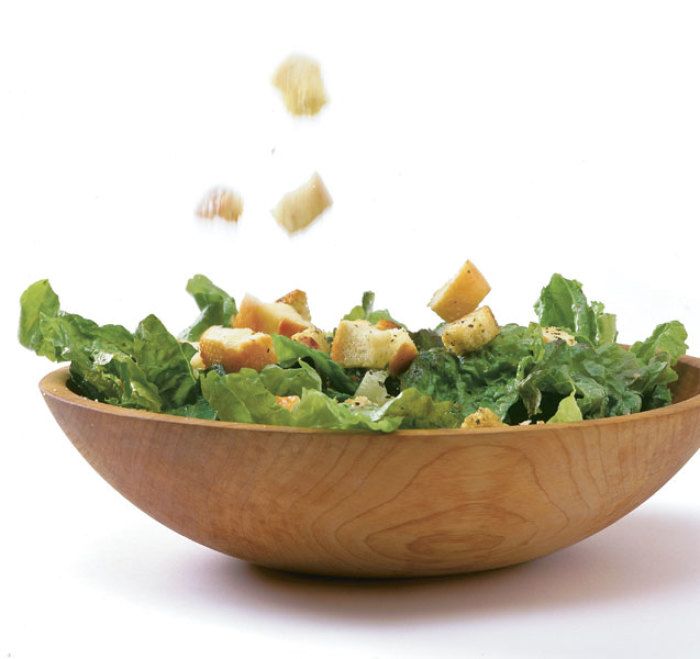
by Ken Haedrich
June 1998
from issue #15
One of my first professional cooking jobs was as an apprentice with an imposing woman chef, a gifted cook whose tongue was as sharp and pointed as her kitchen knives. There was only one way to do anything: her way. And there was only one excuse for missing a day of work: a death in the family. Your own.
In light of her weak interpersonal skills, it was my mentor’s fortune that she had unfailing good judgment in matters of the palate. I clearly remember her diatribes against insipid vinaigrettes, delivered more often that not as she loaded up the jar in which she made hers with her secret ingredient: Dijon mustard. Tons of it. Nearly 20 years later, I still think she made the best salad dressing I’ve ever had, as good as any in this era of fancy oil and vinegar.
So as we head into this season of plentiful green salads, here is my favorite vinaigrette, based on the principles of my former taskmaster. While we’re at it, we’ll look at the simple art of making croutons, and consider the pleasures of wooden salad bowls.
Dressing for success: basic instructions. When it comes to top quality olive oils and vinaigrettes, I plead reverse snobbery. I have a cabinet full of expensive oils but find their flavors too assertive in vinaigrettes when used full strength. For my taste, they’re much better in moderation, almost as a flavoring, the way garlic, herbs, and lemon zest are used. We begin, then, with 4 tablespoons plain supermarket olive oil, like Berio; substitute 1 or 2 tablespoons of this with a flavorful extra-virgin oil if you wish. Pour the oil into a jar with a tight-fitting screw-on lid.
Vinegars vary widely in flavor, character, and strength. How much they vary will, in part, determine the precise amount you’ll need to make a balanced dressing. I can appreciate the subtle effect of a good champagne, white wine, or flavored vinegar in a vinaigrette, but I make no apologies for my everyday choice: red wine vinegar. Add 1 tablespoon to the oil. That’s slightly less than the usual 3 to 1 proportions of oil to vinegar, but we’ll compensate with a bit of lemon juice and the sharpness of mustard. Of the latter, add 1-1⁄2 heaping teaspoons grainy Dijon to flavor and thicken the dressing. Of the former, 1 teaspoon fresh lemon juice gives it a bright citrus spark. Include a bit of finely grated zest.
In a well-balanced vinaigrette, sugar is seldom necessary. However, one or two big pinches of sugar, or a half teaspoon of maple syrup or honey, can take off the sharp edge. Kids often like vinaigrettes better this way.
Add salt and freshly ground pepper; give the jar a good shake and correct the seasonings. As for garlic, a whisper is better than a shout. I press the first bit of juice from the clove into the jar, then drop in the bruised clove; it can be retrieved later. One to 2 tablespoons chopped fresh herbs go in right before serving. This makes 1⁄3 cup dressing, enough for one family-size salad.
Vinaigrette
Makes enough for one family-size salad
4 Tbs. olive oil
1 Tbs. wine vinegar
1 tsp. lemon juice
Pinch of lemon zest
1-1⁄2 heaping tsp. Dijon mustard
Salt and pepper
to taste
2 pinches sugar (opt.)
Bruised clove of garlic
1-2 Tbs. chopped herbs
Put all ingredients except the herbs in a jar with a tight-fitting lid and shake to mix. Add the herbs right before serving.
Salad without croutons is like hot cocoa without whipped cream. Not only should a salad be dressed for success, it should be accessorized in style. And nothing in the salad realm has such enduring style as croutons, a triumph of texture. Their appeal can be summed up in a single word: crunchy.
A case for homemade croutons could be built on frugality grounds alone, but I think the edible evidence is more persuasive. Homemade croutons have more character and better texture; the packaged kind are more fragile and heavy-handed with weird seasonings.
Your choice of bread, then, is the key issue. The rule of thumb is, the sturdier the bread, the crunchier the croutons. Soft white breads, like Wonder Bread, aren’t firm enough to make croutons of any substance. The higher-end white breads, like Arnold or Pepperidge Farm, yield fine results. And chewy sourdough breads make the crunchiest croutons of all, sometimes too crunchy if the crust is very chewy; consider trimming it off. Whole grain breads make less tender croutons than white breads do. Steer clear of sweet breads. Slightly old, dry bread is fine, but do check for mold.
To make croutons, preheat the oven to 325˚F. Cut the bread into 3⁄4-in. cubes, aiming for about 4 cups. Place in a large bowl with 1⁄2 teaspoon each dried oregano and dried basil. Drizzle 2 tablespoons olive oil over the bread and toss. Spread the cubes on a large baking sheet; salt and pepper lightly. Toast for 13 to 18 minutes, until golden. Cool thoroughly on the sheet. Croutons can be stored in a sealed plastic bag for a couple of days.
Croutons
4 cups 3⁄4-in. bread cubes
1⁄2 tsp. dried oregano
1⁄2 tsp. dried basil
2 Tbs. olive oil
Salt and pepper
Preheat oven to 325˚F. Put the bread cubes, oregano, and basil in a large bowl and drizzle the olive oil over the bread, tossing gently.
Spread the bread cubes on a large baking sheet; salt and pepper lightly. Toast for 13 to 18 min., until golden brown. Cool thoroughly on the sheet. Store in a sealed plastic bag.
Wooden salad bowls. I spoke recently with Michael Cohen, president of Snow River Wood Products in Brattleboro, Vermont. Among the items Cohen’s company produces are wooden salad bowls made from northeastern hardwoods. I asked Cohen if he could explain the growing appeal of his bowls. He told me that for years the market was flooded with cheap wooden bowls from Southeast Asia. Now, he explains, consumers have become discriminating woodenware buyers. They want to buy American, and they’re also looking for value, quality, and beauty. “A beautiful wooden salad bowl,” Cohen says, “can add warmth and balance to a home kitchen.”
To which I might add (at the risk of sounding like a New Age pundit), the sight of a fetching green salad piled high in a wooden bowl speaks to our souls. It’s content and context, the woods and the garden, in natural harmony.
The most common way to make a wooden salad bowl is to turn it on a lathe. This is done with a single piece of wood, or as Snow River does it, with pieces of wood joined in butcher block fashion. In addition to being attractive, the butcher block construction prevents the bowl from elongating the way it can when made from a single chunk of wood. When the bowl stretches, it develops cracks that may eventually weaken it.
Cracks aren’t the only thing that will shorten the life of a wooden bowl; so will improper washing. Dishwashers are murder on wooden bowls. High heat and moisture can cause irreparable harm. By the same token, wooden bowls should never soak in water. Soap and water washing probably isn’t even necessary so long as you limit the use of your wooden bowl to salads. Just wipe the inside dry with a paper towel. Any residual oil will be rubbed into the surface and help preserve the wood. If you do wash the bowl, fine. Use hot sudsy water but no abrasive scouring pads. Dry it immediately.
Cohen suggests regular, once- or twice-monthly oil rubs for any wooden bowl. His bowls are treated with a food-grade mineral oil before they leave the factory. Drew Langsner, a woodworker from North Carolina who makes hand-carved wooden bowls, recommends walnut oil. He says that unlike other oils, it tends to harden on the surface and helps give the wood a durable finish.
As for that yard-sale special, think twice before you buy. If the bowl is pitted, gouged, or cracked, it may be more trouble than it’s worth to restore its original patina. A vigorous hand-sanding might help.
Fine Gardening Recommended Products

Berry & Bird Rabbiting Spade, Trenching Shovel
Fine Gardening receives a commission for items purchased through links on this site, including Amazon Associates and other affiliate advertising programs.

Razor-Back Potato/Refuse Hook
Fine Gardening receives a commission for items purchased through links on this site, including Amazon Associates and other affiliate advertising programs.

A.M. Leonard Deluxe Soil Knife & Leather Sheath Combo
Fine Gardening receives a commission for items purchased through links on this site, including Amazon Associates and other affiliate advertising programs.

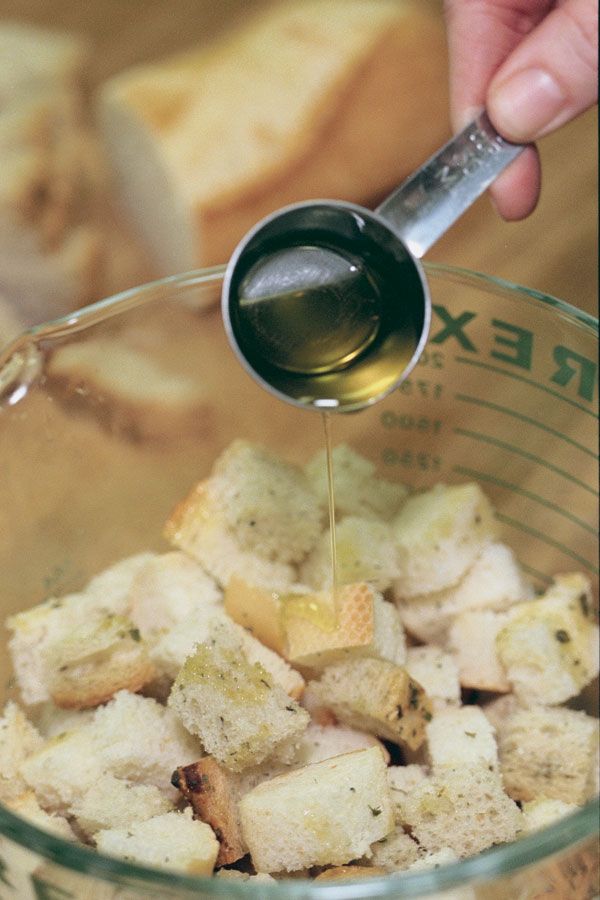
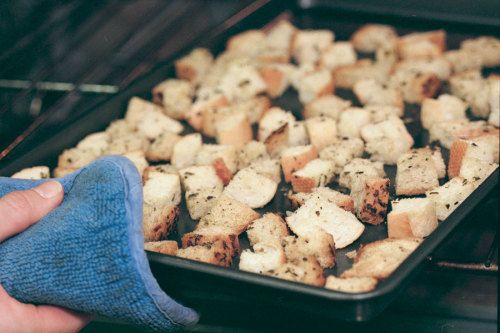


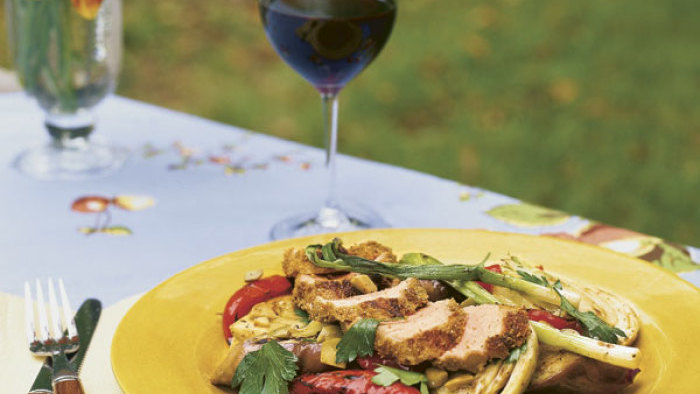

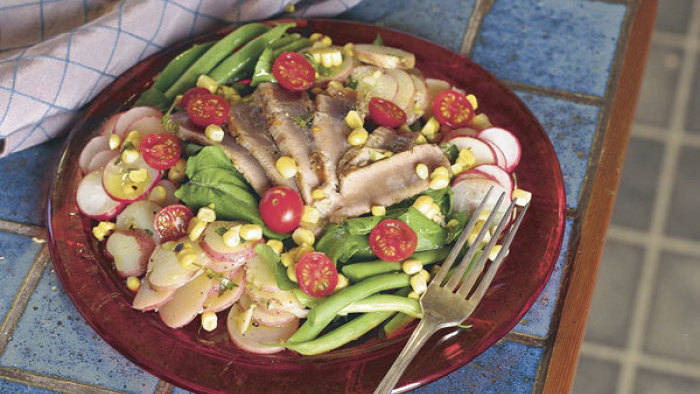













Comments
Log in or create an account to post a comment.
Sign up Log in